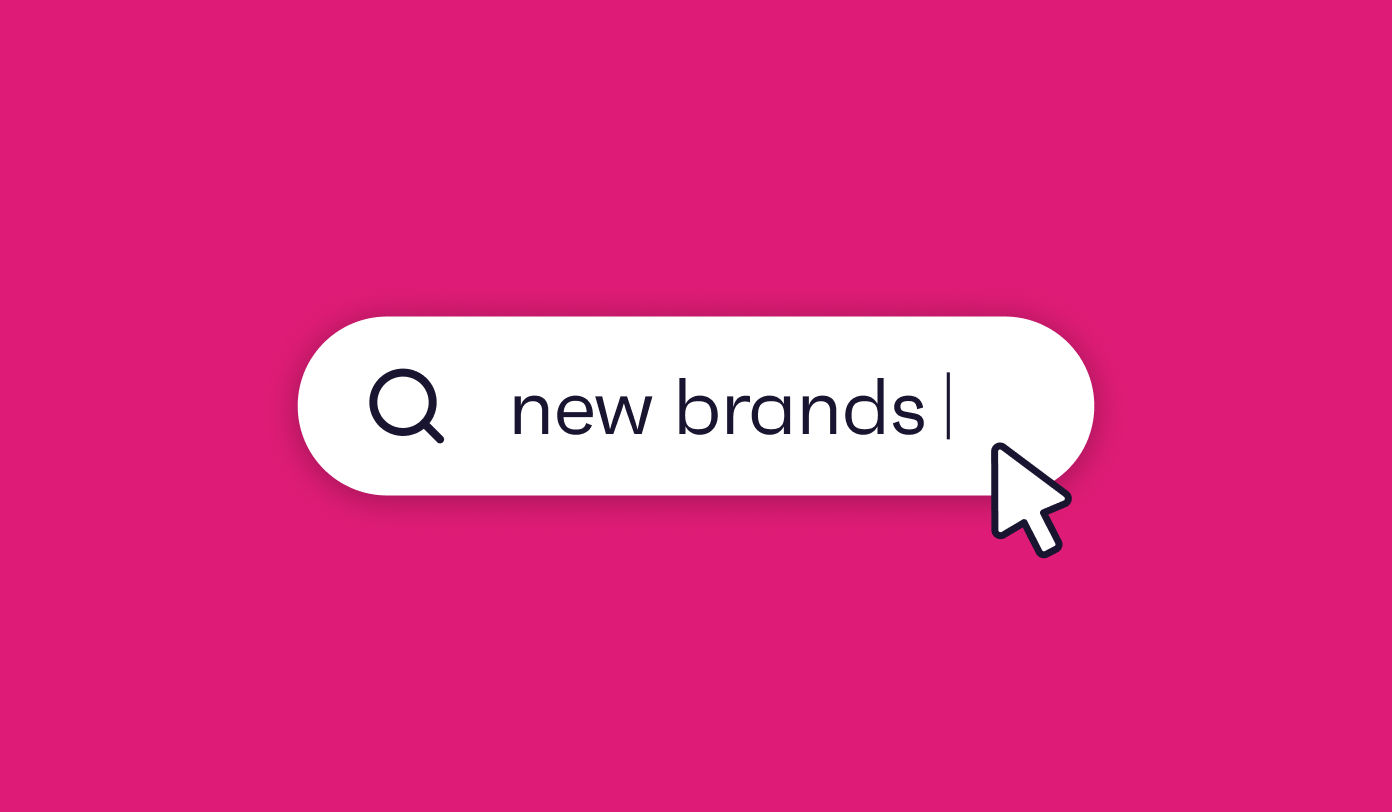Imagine this: you’re elbow deep in a serious marketing campaign, your tech stack scattered across ten different tabs. There are consumer research tools, strategy docs, your CRM, analytics… the list goes on. Each tool promises the world, but all you feel is a growing sense of overwhelm. Sound familiar? If you’re nodding along, you’re not alone.
Despite their promises of efficiency, these tools can create an ‘app trap’, where too many options end up being more of a hindrance than a help. With employees spending about 9% of their time just switching between apps, it’s no wonder productivity takes a hit. And then there’s the cost. Managing a multitude of subscriptions can put a strain on your resources, especially if you’re not using the tools effectively.
Luckily, there’s a simple way to clear up the clutter: tech stack consolidation. In this article, we’ll show you how to strip back your setup and make your tech stack work harder. Here’s what we’ll cover:
- What is a tech stack?
- What are the benefits of consolidating your tech stack?
- Tech stack examples in practice
- How to consolidate your tech stack
- Tech stack consolidation FAQs
What is a tech stack?
A tech stack is a collection of tools, technologies and SaaS applications that employees use to do their jobs.
This includes everything from consumer research platforms like GWI, to CRM systems like Salesforce, to project management tools like Asana. As of 2024, the average organization has more than 125 different SaaS apps in their tech stack. Yikes.
What are the benefits of consolidating your tech stack?
Decluttering your digital workspace does more than you might think. On top of simplifying your daily activities, it also:
Increases efficiency
We’ve already touched on the time wasted switching between different tools, and as the old saying goes, time is money. With fewer tools to ping-pong between, your team can spend more time focusing on what really matters; delivering results. This boost in efficiency leads to better performance and a healthier bottom line for your business.
Reduces costs
Without realizing it, you might be spending a big portion of your budget on tools that your team doesn’t use. Our data shows that 28% of companies typically spend $10K-20K per year on their tech stack, while over a quarter spend $20K-50K. That’s a substantial investment for tools that might not be pulling their weight.
A key step in consolidating your tech stack is performing an audit to pinpoint the systems you might be wasting valuable budget on – but more on this later.

Improves data security
Each new tool you add to your tech stack increases the risk of a data breach, especially if it handles sensitive information like customer data. By consolidating your tech stack, you cut down the number of platforms with access to this data, making it harder for breaches to happen.
Streamlines workflows
Making big teams work together in harmony is no easy feat. Think back to the example at the start of this article. To pull off a showstopper of a marketing campaign, you’ve got to get your content team, design team, demand gen team, social team, and PR team all on the same page. When each team has its own set of tools and workflows, things can quickly become chaotic. But by consolidating your tech stack, you can ensure everyone uses the same platforms, streamlining workflows and making collaboration a breeze.
Tech stack examples in practice
When we talk about a tech stack, it’s important to visualize how all the tools work together to achieve an end result. To bring this to life, we’ve crafted an example of a tech stack in action:
Meet Rochelle, a senior marketing manager working in-house at a travel company. Her goal? Attracting luxury holiday makers. She’s got some pretty steep targets to hit and needs to squeeze every bit of efficiency out of her day.
Once sufficiently caffeinated, Rochelle starts the morning by syncing up with her project manager and content manager on Slack. They’re brainstorming potential campaigns but keep going round in circles, so they hop on a Google Meet call to work things out more effectively. On the call, they commit to running a series of paid ads alongside a compelling blog post to capture their audience’s attention.
The project manager schedules the ads and blog post in Asana, assigning tasks to the copywriters and design team. Meanwhile, Rochelle dives into GWI to identify the most relevant social media channels for their ads and to understand the sort of content that’ll best engage their audience.
Through GWI’s consumer research platform, she learns that luxury holiday goers are 11% more likely than the average consumer to use the internet to find new ideas and inspiration. They’re also 35% more likely than the average social media user to follow travel writers and companies. Digging a bit deeper, she finds that Instagram is the preferred social media platform for their audience (excluding China, where it’s unavailable) and decides to tailor the majority of the ads to that platform.
When it comes to the content itself, Rochelle learns from GWI’s consumer research that luxury holiday-goers have clear preferences. They want brands to be exclusive (157% more so than the average consumer), bold (125% more), and young (124% more), leaving Rochelle with a much clearer direction of how to tailor her messaging. She now knows exactly how to grab her audience’s attention, focusing on bold ads that create a sense of FOMO (hello exclusivity) and are perfectly optimized for Instagram.
With these new insights, Rochelle briefs the copywriters to get started on the ads, which are later designed in Figma. At the same time, the SEO manager makes a start on the blog post brief. He uses Ahrefs for keyword research and plays around on ChatGPT+ to brainstorm a few engaging blog titles, picking his top three and then adding these options to the briefing document in Google Docs.
Once the copywriter finishes the blog post, she hands it over to the content manager for a detailed proofreading. After it’s approved, it’s uploaded to WordPress, where a HubSpot form is embedded to encourage visitors to subscribe to their travel newsletter.
While this is going on, the ads are finalized and launched through Meta Ads Manager, making them visible on Instagram and Facebook. With the campaign now live, the team uses a range of tools to track how it’s performing, including HubSpot, HotJar and Google Analytics.
This example is just a glimpse of what a tech stack can look like, with specific tools varying based on your industry, team, and role. For example, HubSpot data reveals that when it comes to startup companies, the go-to tools for data and analytics are Google Search Console, Typeform, and Stripe, while Intercom, Salesforce, and Zendesk are favorites for sales and customer service.
How to consolidate your tech stack for streamlined teams and cost-effective workflows
As we’ve mentioned, consolidating your tech stack can make your team more efficient and help cut costs. Here’s a simple step by step guide to help you create a more streamlined setup:
1. Outline your process
Before diving headfirst into consolidating your tech stack, take a step back and map out a plan. Think of it like building a house: you wouldn’t start hammering nails without a blueprint (hopefully). By carefully outlining your process, you’ll make sure that your tech stack properly supports your business goals. Start with the core elements, your foundation, and gradually build upon it. This methodical approach will save you time and frustration in the long run.
2. Conduct a tech stack audit
Understanding your tech landscape is the first step to consolidating it.
A tech stack audit involves a thorough review of all the tools and software your team currently uses; think of it as taking inventory.
As you carry out your tech stack audit, consider your stack from two perspectives: what your team needs to do their jobs effectively, and how well your current tools are supporting those needs. As you do this, it’s helpful to align your tech stack with your customer journey to identify any gaps or overlaps.
While working your way through your audit, you might also find that you can categorize your tech stack into groups, for example, tools for insights (such as GWI) and tools for execution (like HubSpot or WordPress). Splitting up your tech stack this way can help to identify overlapping tools, giving you a clearer view of where to streamline your software.
3. Survey your teams to discover their challenges
To get a real feel for how your tech stack is working, you need to hear directly from the people using it every day: your colleagues. Send out a survey to gather insights into their daily challenges and frustrations.
And don’t limit your survey to just one department. Involving everyone from marketing to sales to operations will give you a comprehensive view of your tech stack’s strengths and weaknesses. By understanding the needs and preferences of your team, you can identify areas where tools just might not be working.
4. Highlight tool redundancies
Your surveys and discussions are likely to reveal the tools that are gathering digital dust. You might discover software that’s no longer being used but still has an active subscription, or even worse, tools no one ever knew about in the first place. These ‘ghost tools’ are prime candidates for elimination.
5. Identify and prioritize cross-functional tools
This is your opportunity to identify multi-purpose tools that can be used by different teams for different reasons. Think of it like a Swiss Army knife for your tech stack. Not only will this approach make things run smoother between teams, but it’ll also help you squeeze every last drop of value out of your tech tools.
A perfect example of such a tool is (drumroll please) GWI. Yes, of course we’re biased, but as a global consumer research platform, GWI can be used across a variety of teams – from marketing to product development to ad sales – for a huge range of purposes. Here are different ways that teams can leverage GWI:
Content marketing: Content marketers rely on audience insights to develop content marketing strategies that truly connect with their target audience. Using data from GWI, they can create tailored content for every stage of the customer journey.
Product development: Developing products for humans requires insight into said humans. Product developers turn to GWI to gather insights about specific regions, audiences, and categories. This information helps with the product development process as brands can better meet the needs of their target market.
Brand health: With GWI, companies can keep a close eye on their brand’s health. By tracking things like purchase intent, customer sentiment, and brand loyalty, businesses can understand how their brand is perceived in the market.
Pitching: Sales teams use GWI to craft standout pitches that are backed by solid data. This helps them impress new prospects, retain loyal clients, and close more deals.
Media planning: Agencies use GWI to make the most of their digital advertising budgets. By tapping into GWI’s insights, they can pinpoint the best platforms and strategies for their ads, ensuring they reach the right people in the most effective way.
Partnerships and sponsorships: Partnerships teams use GWI to identify potential brand partners, both locally and globally, who can help grow their reach. With GWI’s insights, they can identify partners or sponsors that match their target audience and business objectives.
Market sizing: Companies turn to GWI when they want to break into new markets. By understanding consumer numbers and spending patterns in specific locations, businesses can make informed decisions about where to focus their efforts.
6. Understand how possible integrations could work
Understanding how your tools work together (or don’t) is a key factor in optimizing your tech stack. Take a step back and visualize how you want everything to connect. Which tools are already talking to each other? Which ones have the potential to integrate, but don’t currently? Are there any ‘lonely islands’ in your tech stack that could be replaced by cross-functional options instead? By mapping out these connections, you’ll identify opportunities to streamline workflows and eliminate redundant tools.
7. Map out your tech stack consolidation plan
This is where the real fun begins. Now that you’ve got a clear picture of your tech stack, it’s time to decide what to keep, what to toss out, and how to connect the dots. There are different ways you can tackle this, and a lot of it will depend on your budget and wider business objectives, but here are the options businesses tend to consider:
Eliminate non-essential tools: One approach is to strip your tech stack down to only the most critical tools. This could mean using basic spreadsheets instead of a CRM, or relying on manual processes rather than automation. While this might save money upfront, it’s probably not the best option for your team’s productivity.
Cut single-purpose tools: Another option is to remove all single-purpose tools and only invest in comprehensive platforms that can handle multiple tasks, for example, HubSpot, which allows you to create landing pages, send emails, and segment your audience, vs a tool that can only perform one of these tasks. While this approach can simplify things and save you money, you might end up sacrificing specialized features that only certain single-purpose tools offer.
Invest in multi-function tools: A popular go-to strategy is to invest in a few versatile tools that can perform multiple functions, then integrate them so they operate as one system. This balanced approach allows you to retain essential features while benefiting from streamlined workflows, and you’ll likely save enough money to afford any single-purpose specialized tools you might still need.
Whichever approach you choose, our biggest piece of advice is to get visual. Don’t be afraid to go old school; grab a whiteboard, some sticky notes, or even a big sheet of paper and start mapping out your new tech stack. Seeing your plan laid out like this can help you spot potential problems and find creative solutions.
8. Get employee feedback on your tech stack consolidation plan
Once you’ve mapped out your ideal new tech stack, share it with your colleagues to get their opinions. They’re the ones who’ll be using it on the daily, so their buy-in is essential. Encourage feedback, and be open to making adjustments based on their insights.
9. Put your plan into action
With everyone on board and your plan now finalized, it’s time to start making changes. Cancel those unused subscriptions, be wary of any auto-renews looming in the not-so-distant future, kickstart conversations with new suppliers (where needed), and implement any other adjustments you’ve decided on. As you do this, make sure to document everything. This will be a lifesaver for your team as they get used to the new ways of working.
Once everything is up and running, schedule regular check-ins with your team. This is a chance to see how things are going, address any issues, and make any necessary tweaks.
Tech stack consolidation FAQs
What is a marketing tech stack?
A marketing tech stack (or martech stack) is a collection of tools and platforms used by marketing teams to plan, execute, and measure their campaigns. It typically includes tools for email marketing, social media management, content creation, SEO, analytics, and customer relationship management.
How do you choose the right marketing tech stack?
Building the perfect marketing tech stack starts with understanding your goals and audience. Consider what you want to achieve, who you’re trying to reach, and how much you can spend. Look for tools that work together seamlessly and offer robust data protection.
What are the benefits of running regular tech stack audits?
Regular tech stack audits save you time and money by surfacing unnecessary tools and highlighting opportunities for better collaboration.
Final thoughts
A cluttered tech stack is a productivity killer. Forget the days of endless tab toggling, it’s time to optimize your tech stack. By consolidating your tools, you can streamline your workflows, boost efficiency within the team, and – here’s the biggie – save more money.
A consumer research tool (like GWI) is the perfect way to maximize your tech stack by providing actionable insights to inform every aspect of your business, from marketing and product development to sales and customer service.
Fancy a look around?
Book your demo





.webp?width=495&height=317&name=pink_thumb_graphs%20(1).webp)
.webp?width=495&height=317&name=pink_thumb_letter%20(2).webp)
